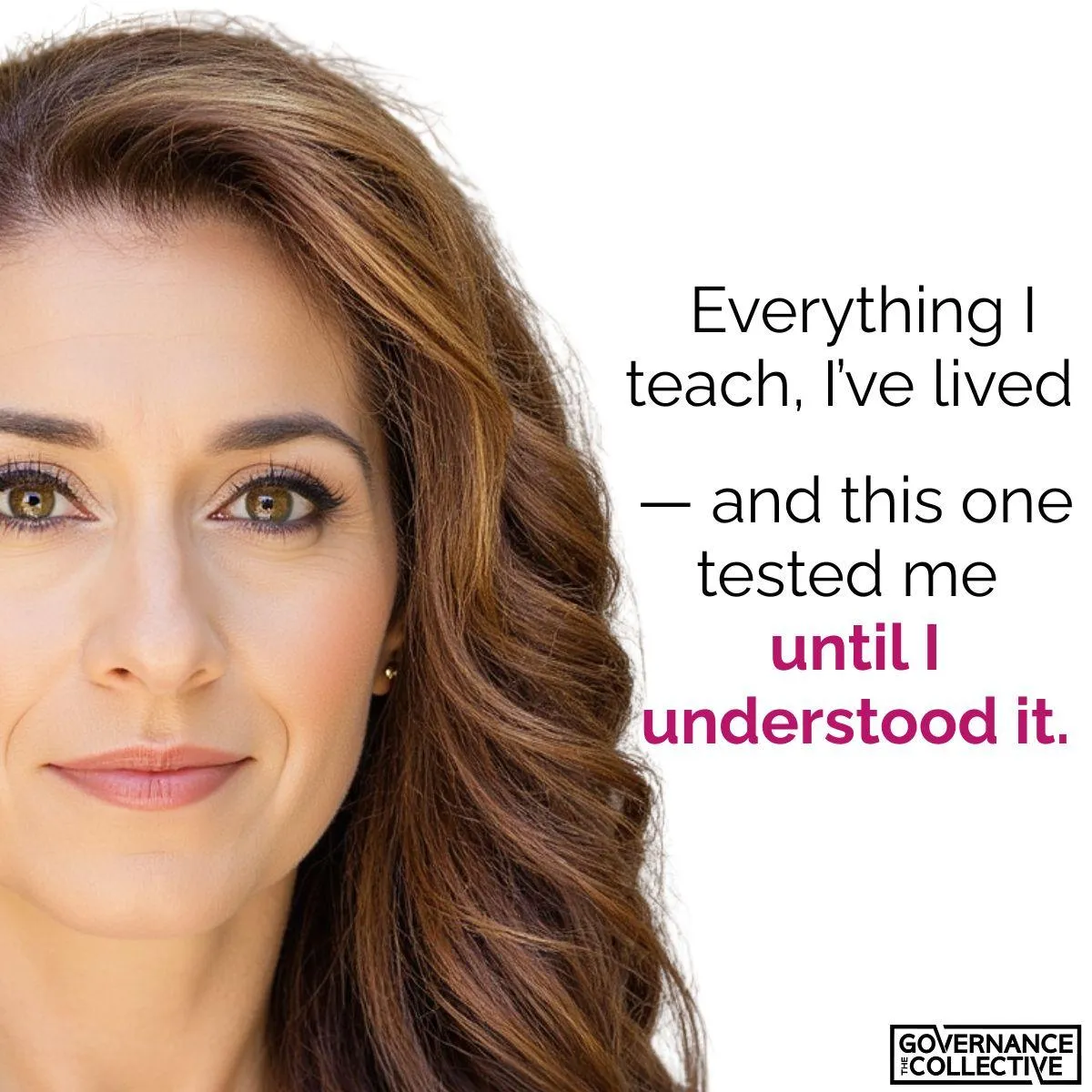
When Unspoken Emotions Make the Decisions
Sometimes we step on people’s feelings without realising it.
We assume if it really mattered, they’d say something.
Often, they don’t.
You feel the shift — shorter answers, cooler tone, less warmth.
Sometimes they ghost. Sometimes it leaks out sideways in little revenge jabs.
This is where it gets risky — inside and outside the Boardroom.
When emotions go unspoken, they start making the decisions instead of us.
Silence replaces trust. Reactivity replaces reflection.
What should be a values-aligned decision quietly turns personal.
We like to think we’re dealing with the adult version of someone.
Sometimes it’s the younger, unheard self who learnt long ago that how they feel doesn’t matter.
In a room full of triggered defaults, things can turn sideways fast.
So I do the most behavioural-governance-aligned thing I know:
I name it.
“I feel like something’s shifted. Did I do or say something that didn’t land well?”
Awkward. Vulnerable. Human.
And it brings integrity back — to the decision and to the relationship.
Why this matters to decision integrity
Left unnamed, we don’t debate the real issue; we defend positions.
Data gets cherry-picked to protect egos, not illuminate reality.
Risk appetite flexes to avoid discomfort rather than manage exposure.
On paper it looks rational — but the inputs are bent, and the outcome drifts.
What to do (practical, human, behavioural-governance aligned):
Name the shift early. Calm, specific, soon. Stop stories hardening; keep it adult-to-adult.
Re-anchor to purpose. “What decision are we making? What outcome are we optimising for?” Move from me vs you to us vs the problem.
Invite ownership, not blame. “If something I’ve done made this harder, that’s on me too.” Lower the heat so truth can enter.
Separate signal from story. “What’s observable? What’s interpretation? What’s the risk if we’re wrong?” Clean the inputs before the decision locks.
Set behavioural guardrails. One voice at a time. No side comments. Zero surprises. Make psychological safety a system, not a mood.
Close the loop. State the decision, the why, and next steps. No residue. No “I’m fine” afterburn.
That’s Behavioural Governance: not just papers and process — conditions that let decisions hold.
The bridge to practice
If this landed for you, the next step is giving your team structures that make this easier to do under pressure. Naming the shift is the human move; designing guardrails is the governance move. When frameworks carry the load, people don’t have to white-knuckle composure — the system does it with them.
How to Design Governance Frameworks that Shape Behaviour (without the BS, the Bottlenecks and the Boardroom Blame Game)
Who it’s for: Chairs, Directors, CEOs/MDs, and Governance Professionals who want less friction, more trust, and stronger decision integrity.
You’ll learn (what/why):
How frameworks create behavioural guardrails so meetings stay adult, present, and accountable
How to reduce “I’m fine” dynamics that quietly derail outcomes
How to make alignment easier — and drama rarer
You’ll leave with:
A lens to spot where behaviour is distorting decisions
A practical checklist to test if your frameworks shape the right behaviours
Clean language to name the shift — without heat or drama
When: October 30, 2025 - 4:00pm – 4:45pm AEST (Sydney time)
Format: Live online (recording provided post registration)
Kind regards,
